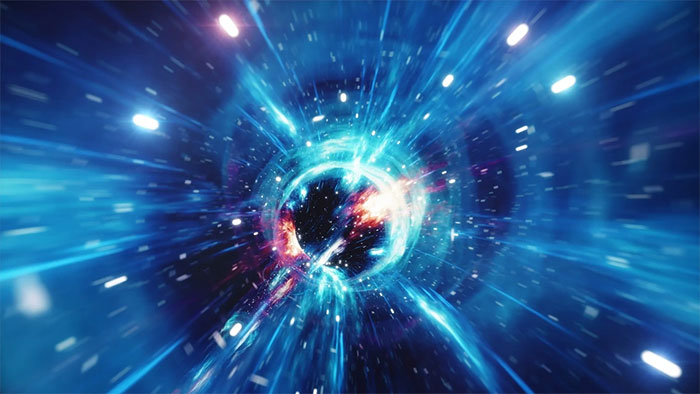The key to opening the door to time travel
Traveling back in time or taking a shortcut to the future is a desire that humans have sought to realize. Could a recent scientific discovery bring us closer to a solution to this problem?
Imagine a thread so thin that it is invisible to the naked eye, yet it contains the mass of thousands of stars.
This is not science fiction but a theoretical description of cosmic strings , or structures that hold the answers to the greatest mysteries of the universe.

Time travel, in which we can go back to the past or leap forward to the future, is a mystery, a desire that humans seek (Photo: rost9/Adobe).
Researchers believe that if these string theories are confirmed, they will become the key to time travel.
Cosmic strings, if they exist, are incredibly thin filaments. They could be infinitely long tubes or coiled together. Despite their thinness, the mass of a cosmic string is equivalent to tens of thousands of stars, and it would gradually collapse over time, emitting gravitational waves as it oscillates.
So far, physicists have proposed two types of cosmic strings .
- The first is cosmic superstrings. It comes from string theory, a quantum theory that holds that the fundamental particles of the universe are vibrating strings. Superstrings span the entire universe, contain the fabric of reality, and may hold the key to time travel.
- The second type of cosmic string is thought to be a remnant of the formation of the early universe. These scars were left behind during a transition period in the universe's history, much like cracks that appear when water freezes.
One of the most fascinating things about cosmic strings is that they could be the clue to making time travel a reality.
Astrophysicist J. Richard Gott has discovered that two cosmic strings moving at nearly the speed of light could theoretically form a loop in space-time and act as a wormhole that would allow us to travel through time.
But detecting cosmic strings is not simple. That is why the theory remains elusive.
The extremely high density of cosmic strings would warp space-time, creating a lensing effect that could cause duplicate images of galaxies.
However, recent findings suggest that these fibers may be lighter than previously thought.
The lighter cosmic strings make them even harder to detect on a large scale.
That's why some astrophysicists have proposed another method: microscopic observations of individual stars, where a passing cosmic string can temporarily double the star's brightness, making it easier to detect.
And so we can find a way to travel in time without running into paradoxes.
- Can humans travel through time?
- Time travel is entirely possible?
- Key points of the car door lock system
- Tools to open the door without hands
- Time travel is a fantasy or quite realistic?
- How to use safe rolling door
- Save the earth with space travel
- Time travel is real, this is the person holding this extraordinary record
- Did America secretly experiment in time travel and teleportation?
- Physicists calculate the number of years we need to travel interstellar, so large that you will sigh boredom
- Technology in ancient vases helps Stone Age Chinese 'beyond time'
- Find out the time machine's ability to become a reality
 Van Allen's belt and evidence that the Apollo 11 mission to the Moon was myth
Van Allen's belt and evidence that the Apollo 11 mission to the Moon was myth The levels of civilization in the universe (Kardashev scale)
The levels of civilization in the universe (Kardashev scale) Today Mars, the sun and the Earth are aligned
Today Mars, the sun and the Earth are aligned The Amazon owner announced a secret plan to build a space base for thousands of people
The Amazon owner announced a secret plan to build a space base for thousands of people